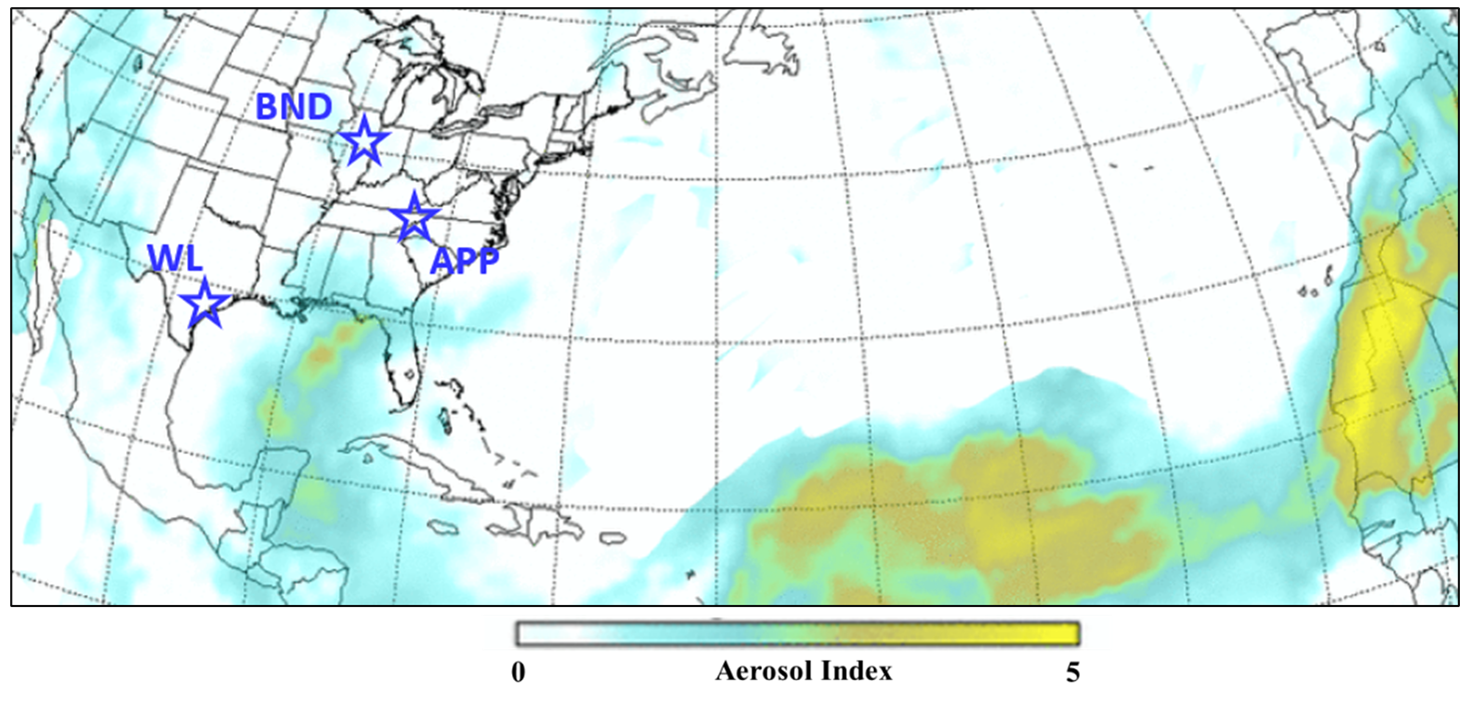Using Satellite Observations and Surface Aerosol Monitoring Networks (e.g., BC2 and NFAN) to Characterize Long-range Mineral Dust Transport in the U.S.
M. Mehra1, S. Shrestha, K. AP, R. Kumar2, E. Andrews3,4, J. Sherman5, J.H.F. III, S. Usenko and R.J. Sheesley
1Baylor University, Waco, TX 76706; 254-400-6290, E-mail: manisha_mehra@baylor.edu
2National Center for Atmospheric Research (NCAR), Boulder, CO 80307
3Cooperative Institute for Research in Environmental Sciences (CIRES), University of Colorado, Boulder, CO 80309
4NOAA Global Monitoring Laboratory (GML), Boulder, CO 80305
5Appalachian State University, Department of Physics and Astronomy, Boone, NC 28608
Adopting cleaner technologies for sectors such as transportation, coal-fired power plants, and industry has reduced urban anthropogenic emissions for select pollutants in the United States (U.S.). This change in urban emissions combined with other factors has renewed efforts to understand the impact of biomass burning (BB) and mineral dust on air quality and radiation budget. To address scientific air quality questions about the frequency and seasonality of BB and mineral dust and to estimate the impact on radiative forcing, measurements of aerosol optical properties are made by the (i) Texas Commission on Environmental Quality (TCEQ) Black and Brown Carbon (BC2) network in Texas, US and (ii) National Oceanic and Atmospheric Administration (NOAA) Federated Aerosol Network (NFAN) in different parts of the world. The basic aerosol optical properties measured at the BC2 and NFAN sites include aerosol light scattering (total and backward hemisphere) and light absorption. Here we present a case study of characterizing transport and impacts of June 2020 Saharan dust on the air quality at three different sites: (i) southern U.S. (West Liberty, Houston, Texas; BC2 site), (ii) eastern U.S. (Appalachian State University, Boone, North Carolina; NFAN site), and (iii) midwestern US (Bondville, Illinois; NFAN site). The main aim of this study is (i) to evaluate the feasibility of using aerosol optical properties for near real-time detection of the influence of Saharan dust at sites with different background conditions and, (ii) to estimate the impact of Saharan dust aerosols on the regional radiation budget. The details about the relevance of such a huge Saharan dust event on air quality and its impact on the radiation budget will be discussed during the presentation.
Figure 1. Spatial distribution of average aerosol index [AI] retrieved from Suomi NPP OMPS for June 25 & 26, 2020 [Source: NASA/NOAA]. A dense dust plume is observed over the eastern, central Atlantic and the Caribbean Basin with AI above 3. The geographical locations of the BC2 site (WL) and the NFAN monitoring sites (APP and BND) are also shown.

